 [A little under three years ago, the Eastman Kodak Corporation went bankrupt. Slightly over a year ago, Kodak completed its bankruptcy process and, much chastened, began its modest rebirth. To celebrate the first anniversary of its return to fiscal solvency, I’m posting here — complete with footnotes — the essay I wrote for Swiss photographer Catherine Leutenegger’s monograph, Kodak City, just published by Kehrer Verlag. This is the first of two parts. — A. D. C.]
[A little under three years ago, the Eastman Kodak Corporation went bankrupt. Slightly over a year ago, Kodak completed its bankruptcy process and, much chastened, began its modest rebirth. To celebrate the first anniversary of its return to fiscal solvency, I’m posting here — complete with footnotes — the essay I wrote for Swiss photographer Catherine Leutenegger’s monograph, Kodak City, just published by Kehrer Verlag. This is the first of two parts. — A. D. C.]
•
On January 19, 2012 the Eastman Kodak Corporation filed for Chapter 11 bankruptcy protection. In September 2013, just months ago as I write this, Kodak emerged from bankruptcy, much diminished as a consequence of having sold off most of its patents, downsized and reconfigured now as a new-tech company concentrating on developing commercial and consumer digital printers and inks for the publishing, packaging, and advertising sectors.[1] An enterprise that for almost a hundred years ruled as the undisputed alpha dog of its industry has fallen abruptly back into the pack.[2]
All of this has received extensive coverage not just in the business and photographic press but in the mass media, the collapse of a major Fortune 500 corporation making headlines around the globe. Far less attention got paid to the fact that Kodak’s implosion has had a profound effect on the city of Rochester, New York, the archetypal company town where Kodak built its headquarters — the metropolis that Swiss photographer Catherine Leutenegger has taken as the subject of this melancholy, elegiac suite of urban landscapes and industrial interiors.
•
George Eastman revolutionized photography in 1888 with the debut of his original Kodak, pre-loaded with a 100-exposure roll of flexible film and the promise, “You push the button, we do the rest.” That democratized the act of picture-taking, by making it available to anyone who could afford the $10 necessary to purchase this ingenious package, which included camera, film, processing, prints, and reloading.
Up until that moment, anyone who wanted to make photographs had to practice the craft of photography, from exposure through printing. Eastman’s enabling of unskilled amateurs proved epochal.
His recognition that the vast majority of people wanted to expose negatives and see positives as soon as possible thereafter, with no further labor necessary on their part, spawned an international industry. This included the manufacture of printing papers, films, photo chemistry, and such sidelines as mounts, albums, and other display artifacts; the design and production of cameras, lenses, and other accessories; and the processing of negatives and printing therefrom for all but the few who elected to do that themselves. For the next century, Kodak held pride of place in that industry, the 800-pound gorilla in the room, nicknamed (not necessarily fondly) “Big Yellow” in reference to the primary color of its packaging.[3]
As it grew, Kodak developed high-end, specialized products for scientists and the military-industrial complex. Its films, papers, and photo chemicals found favor with creative photographers, commercial studio photographers, photojournalists, filmmakers, and other professionals in the field. But its major revenue stream, from beginning to end, came from servicing the market composed of millions of casual snapshooters, whose demands, needs, and preferences in turn had a shaping effect on the product line.[4] If, then and thereafter, New York City qualified as the photo capital of the nation (and, arguably, of the world) in terms of professional image production, publishing, and distribution, what came out of Rochester made much of that possible, while also supplying the material needs of most of those involved in vernacular and applied photography.
Certainly, in terms of visual culture, the look of the twentieth century, as preserved in home movies and Hollywood films and still photographs everywhere, from countless family albums and shoeboxes full of snapshots to the iconic images reproduced in books and periodicals and the original prints by major photographers in private and public collections, owes much to Plus X and Tri-X and Kodachrome, to Dektol and HC-110, to Velox and Kodabromide, along with dozens of other products conceived and manufactured in Kodak City.
•
Located at the northern end of New York State, just south of Lake Ontario, with Toronto on the other side, Rochester had acquired a reputation as the Northeast’s first “boomtown” by the mid-1800s; newspapers dubbed it “The Young Lion of the West.” Stimulated by the opening of the Erie Canal in 1825, which connected shipping on the Great Lakes to the Hudson River and thence to the Atlantic Ocean, Rochester became a center for the milling of grain from the Midwest, earning it the sobriquet “Flour City.” Thriving nursery and seed businesses (and, perhaps, a fondness for plays on words) made it known also as “Flower City.” By 1880, the year Eastman founded the business that would earn it the nickname “Kodak City,” Rochester ranked as the 20th largest metropolis in the United States, with a population close to 90,000.
Born in 1854 on a farm owned by his parents in the village of Waterville, near Rochester, Eastman moved with his family to Rochester in 1860. His father’s premature death left his mother reduced to taking in boarders; Eastman quit school and began working to help support the family, starting as a 14-year old office boy in an insurance company. He’d moved up to clerking in a local bank when, as an avid amateur photographer who loved to tinker, he grew confident enough in his plans to quit his day job and start a dry-plate manufacturing company in 1880.
With its embrace of the entrepreneurial spirit, Rochester offered itself as a logical home base for the various iterations of his enterprise. Other industries, related and not, located there as well over the years: Western Union, Xerox, Bausch & Lomb, Gannett Newspapers. Eastman, and Kodak after his death, remained loyal to the city, and it to him and his company.
From Eastman’s end, this included not only job creation and the consequences thereof to the local economy, plus the rendering of hefty corporate taxes to the municipality, but the practice of paying good wages and the voluntary initiating of numerous employee benefits. Though he opposed unionization, Eastman on his own initiative set up retirement funds, disability and life insurance coverage, dividends as bonuses, and a profit-sharing plan for Kodak’s workers and management.[5]
At its peak, Kodak employed over 60,000 people in Rochester. Many of those worked at Kodak Park, 3 miles north of downtown. Construction thereof began in 1890, only two years after the introduction of the first Kodak camera — already imperative to meet the mounting demand for the Eastman Kodak Company’s still-photography and motion-picture product lines. In time the park became the largest photographic-product manufacturing facility in the world, with more than 150 buildings spread over 1,300 acres.[6] All of this tied the company closely to the health of Rochester’s economy.
Rochester’s civic and cultural life owes its own deep debt to Kodak and its founder. Eastman made donations to and provided subsidies for a wide range of institutions. In Rochester he established and supported a dental dispensary, the world-famous Eastman School of Music, a symphony orchestra, and the Eastman Theatre for musical and dramatic performances. He gave tens of millions of dollars to the University of Rochester (endowing there a renowned medical school and hospital) and the Rochester Institute of Technology, the distinguished alumni of whose photography program include Jerry Uelsmann, Pete Turner, Bruce Davidson, and other notables in the field.
Eastman died by his own hand in 1932, at the age of 77, after suffering for some years with a crippling degenerative spinal disease. He left a note that read,
To my friends
My work is done —
Why wait?
GE
(Part 1 I 2)
•
[1] See “Kodak’s new role in Rochester,” Rochester Democrat & Chronicle, August 25, 3013, and “Kodak Bankruptcy May Get Out of Photography, Make Bet on Digital Printing” by Beth Jinks and Mary Childs, Bloomberg, January 20, 2012.
[2] Kodak’s payroll in Rochester peaked in 1982, at 60,400. Globally, it peaked in 1988, at 145,300. See “Kodak’s growth and decline: a timeline,” Rochester Business Journal, January 19, 2012.
[3] At its peak, in 1996, Kodak commanded over two-thirds of the global market share for photographic goods and services. That year’s revenues came close to $16 billion; the company was worth over $31 billion; and the Kodak brand was the fifth most valuable in the world. Currently it employs roughly 7100 people in Rochester.
[4] For example, the palette of any color film revolves around its basic balance between the primary colors. When devising Kodachrome film in the 1930s, Kodak determined that the film’s users, both amateur and professional, would principally make images of people, who, in terms of demographics, would be primarily white-skinned. They decided, therefore, that the key function of the color palette of Kodachrome was to render the skin tones of white people in a way that they would find pleasing. On that basis, the color palette of the film was orchestrated. Fuji Color film, for the same reason, has as its reference point the coloration of Asians. See Winston, Brian, “A Whole Technology of Dyeing: A Note on Ideology and the Apparatus of the Chromatic Moving Image,” in Daedalus, Volume 114, no. 4 (Fall 1985), pp. 105-123.
[5] For example, Eastman in 1919 turned a full third of his personal holdings of company stock — then worth $10 million — over to his employees. Noted in his biography at the company’s website.
[6] In 2012 a former employee revealed that Kodak had stored weapons-grade uranium in an underground lab at Kodak Park for almost 30 years, which — though the amount would not have enabled creation of a nuclear device — deeply upset the Nuclear Regulatory Commission. See “Kodak confirms it had weapons-grade uranium in underground lab” by Dugald McConnell and Brian Todd, CNN, May 16, 2012.


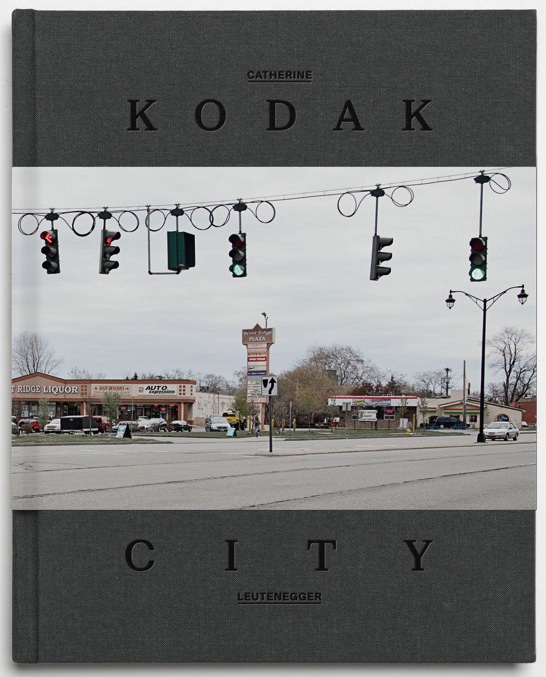
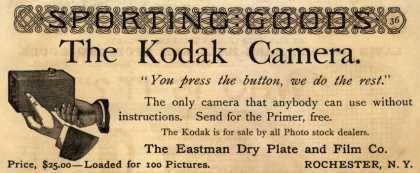
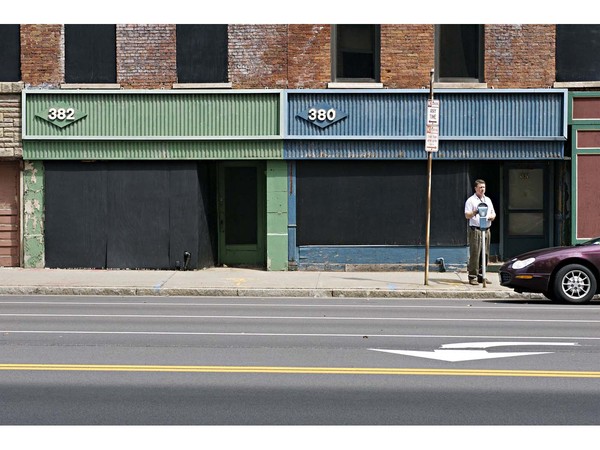
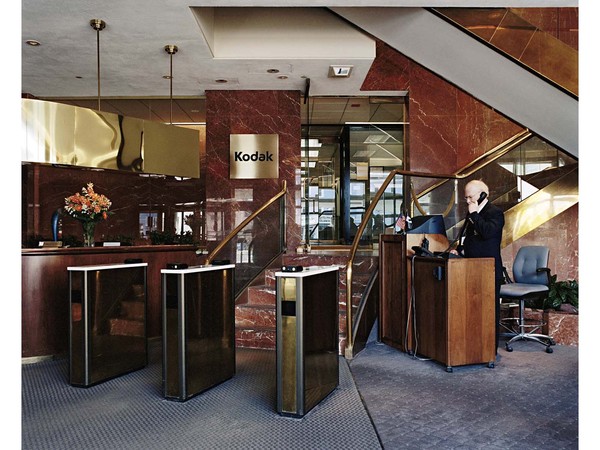
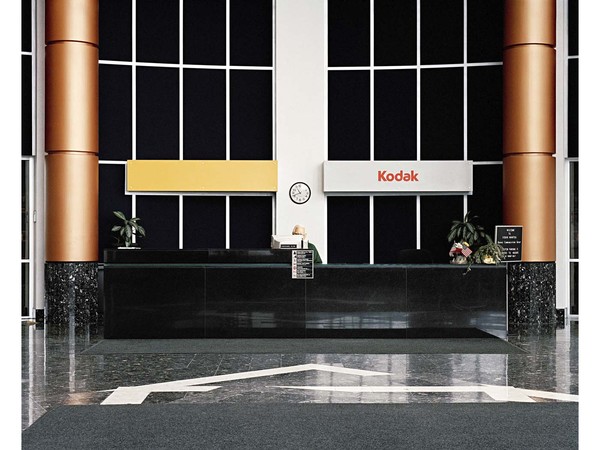
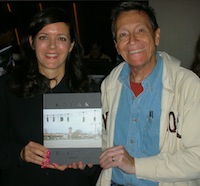




I personally dealt with Kodak management from the mid 80’s through the late 90’s in our photographic workshop program [at the Palm Beach Photographic Centre]. The incompetence of most of the department heads was appalling. For the most part, and there were a couple of exceptions, all they ever cared about was covering their collective butts. Virtually every decision they made was predicated on how they were perceived by their bosses and not if it actually benefited Kodak or our program.
The retail side of our program was handled even worse. We saw our Kodak rep. once per year and that was just to sign our annual contract to sell film. All our fellow retailers in S Florida used to call him “The Phantom” because they never saw him. Yet he got paid on a regular basis to do nothing. This is what killed Kodak, complacency. Anybody in a management position became legends in their own minds. Enter Fuji Film.